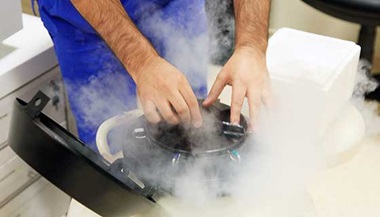Gonadal Disorders
Both men and women have glands called gonads. Gonadal disorders can affect the ovaries in women and the testes in men.
What You Need to Know
- Gonadal conditions can cause menstrual problems in females and disorders of the testes in males.
- Gonad disorders can also contribute to infertility in both males and females.
- Hormone imbalance due to gonad disorders may be treated with hormone medications.
What are gonadal disorders?
Gonads are glands that produce hormones that are involved in reproduction and other functions of the body. Those hormones include estrogen, progesterone and testosterone.
The female gonads, the ovaries, are a pair of reproductive glands located in the pelvis, one on each side of the uterus. The ovaries produce eggs and female hormones.
In males, the two testes, or testicles, are male sex glands that are part of the male reproductive system. They are located behind the penis in a pouch of skin called the scrotum.
Gonadal and menstrual disorders are most commonly caused by hormone dysfunctions. The ovaries and testes produce some of the same hormones, but in different amounts.
There are several types of gonadal disorders, and they may affect men and women differently.
Hypogonadism
Hypogonadism can affect males or females.
Primary hypogonadism means the testes or ovaries are not producing sufficient hormones. Its causes include:
- Genetic conditions that affect the sex chromosomes such as Turner or Klinefelter syndromes
- Addison’s disease (adrenal insufficiency)
- Hypoparathyroidism
- Infectious disease such as mumps
- Kidney disease
- Liver disease
- Too much iron in the blood (hemochromatosis)
- Radiation treatments or surgery affecting the gonads
Central hypogonadism originates in the pituitary or hypothalamus glands in the brain, which control the gonads. Many issues can throw these controlling glands off balance, including:
- Genetic conditions
- Infections
- Inflammation
- Nutritional deficiency
- Opioid or steroid use
- Surgery, radiation or injury that affects the pituitary or hypothalamus glands
Hypogonadism in Females
Primary or central hypogonadism in females can affect the ovaries and their secretion of hormones. The condition can cause:
- Delayed puberty
- Lack of menstruation
- Hot flashes
- Breast discharge
Hypogonadism in Males
Hypogonadism affecting the testes, or gonads, the organs in men that produce sperm and hormones, including testosterone, occurs when the testes produce lower-than-expected levels of testosterone. Symptoms in males include:
- Erectile dysfunction
- Male infertility
- Delayed puberty
- Development of breast tissue (gynecomastia)
- Body hair loss
- Depression or reduced energy
- Osteoporosis (loss of bone)
- Low sex drive
Low testosterone can be identified through a blood test typically performed in the morning, when levels are highest, as testosterone levels can drop by as much as 13% during the day.
Ovarian Disorders
Ovarian disorders include:
- Primary ovarian insufficiency, a condition in which a woman’s egg supply runs out before age 40
- Ovarian cyst
- Ovarian torsion (twisted ovary)
- Polycystic ovary syndrome
- Ovarian cancer
Menstrual Disorders
These are usually caused by imbalances in two hormones ― estrogen and progesterone ― or can be related to an overactive or underactive thyroid. These problems can cause symptoms such as:
- Abnormally early or late onset of puberty
- Amenorrhea (absent menstrual periods)
- Light periods
- Irregular periods
- Menorrhagia (heavy periods)
Ovarian disorders can also contribute to problems during pregnancy and the early onset of menopause.






